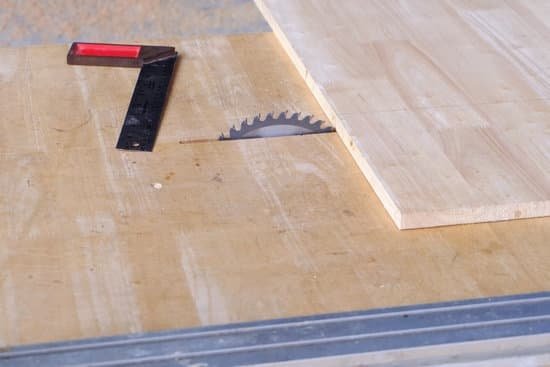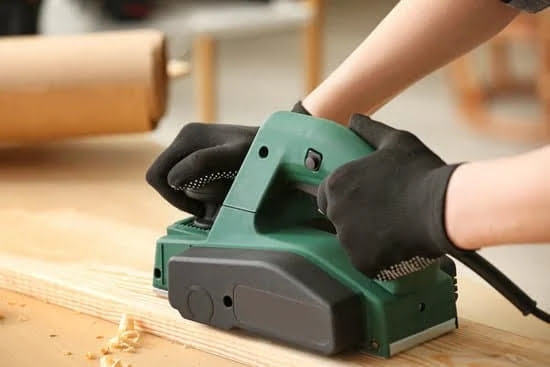Are you looking to add a new piece of furniture to your home? A frame stool woodworking is a great way to create a stylish and practical addition to any space. Whether you’re a seasoned woodworker or just starting out, building an A frame stool can be a fun and rewarding project. In this article, we will guide you through the process, from choosing the right wood to adding personalized finishes.
When it comes to A frame stool woodworking, one of the most important decisions you’ll make is selecting the right type of wood for your project. The choice of wood will not only affect the overall look of your stool but also its durability and strength. We will discuss the best types of wood for A frame stool construction and what factors to consider when making your selection.
In addition to choosing the right wood, having the necessary tools and materials is essential for successful A frame stool woodworking. From saws and drills to sandpaper and finishes, we will walk you through the list of items you’ll need to have on hand before getting started on your project. So let’s dive in and get started on creating your very own A frame stool.
Choosing the Right Wood for Your a Frame Stool
When it comes to woodworking projects like building an A Frame Stool, choosing the right wood is crucial for the durability and overall aesthetic of the finished product. Different types of wood offer different strengths, grain patterns, and colors, so selecting the best wood for your A Frame Stool is an important initial step in the woodworking process.
Considerations for Choosing Wood
Before starting your A Frame Stool woodworking project, consider what qualities you want in your finished stool. Do you want a light or dark colored wood? Are you looking for a specific grain pattern? Do you need a wood that is particularly strong or resistant to moisture? These are all important factors to consider when choosing the right wood for your project.
Popular Wood Choices for a Frame Stools
Some popular choices for A Frame Stool woodworking include oak, maple, cherry, and walnut. Each type of wood has its own unique characteristics and benefits. Oak, for example, is known for its strength and durability, making it a great choice if you’re looking for a long-lasting stool.
Maple offers a smooth finish and can be easily stained to achieve different colors. Cherry has a beautiful reddish-brown color that deepens with age, while walnut boasts a rich chocolate brown color and unique grain patterns.
Other Considerations
In addition to the appearance and strength of the wood, consider how easy it is to work with when selecting materials for your A Frame Stool woodworking project. Some woods may require more specialized tools or techniques to work with, so keep this in mind as you choose the right wood for your project. By carefully considering these factors, you can ensure that the wood you choose is perfect for creating a stunning and functional A Frame Stool.
Tools and Materials Needed for a Frame Stool Woodworking
Essential Tools for a Frame Stool Woodworking
When starting your A Frame stool woodworking project, there are several essential tools that you will need to have on hand. These include a saw, measuring tape, drill, sandpaper, hammer, and wood glue. The saw will be essential for cutting the wood to the desired sizes for the stool’s frame and seat.
The measuring tape will ensure precision in the dimensions of each piece of wood used. A drill will be necessary for creating holes for screws or assembling pieces together. Sandpaper is crucial for smoothing out any rough edges or surfaces, while the hammer and wood glue will aid in securing the various components of the A Frame stool.
Materials Required for a Frame Stool Woodworking
In addition to the tools mentioned above, there are key materials that you will need to acquire before starting your A Frame stool woodworking project. These materials include high-quality wood such as oak or maple for the frame and seat of the stool. It is important to select durable and sturdy wood that can withstand weight and wear over time.
You will also need screws, nails, or wooden dowels to fasten the different parts of the stool together securely. Lastly, a finish such as varnish or paint may be needed to add a polished look to your finished A Frame stool.
Safety Gear for Woodworking
Safety should always be a priority when engaging in woodworking activities. Before embarking on your A Frame stool project, it is crucial to ensure that you have appropriate safety gear on hand. This includes safety goggles to protect your eyes from sawdust and debris during cutting and sanding processes.
Additionally, wearing gloves can prevent splinters and injuries while handling wood and using tools. Lastly, a dust mask should be worn when sanding or working with finishes to avoid breathing in harmful particles.
Step-by-Step Guide to Building Your a Frame Stool
Building your own A Frame Stool can be a rewarding woodworking project that adds both functionality and style to your home. Follow these step-by-step instructions to create a sturdy and stylish stool for your living space.
Step 1: Gather Your Materials and Tools
Start by gathering all the necessary materials and tools for the project. This includes measuring tape, saw, wood glue, drill, sandpaper, screws, and of course, the wood for your stool. Make sure you have all the items on hand before you begin to avoid any interruptions during the building process.
Step 2: Cutting the Wood
Measure and cut the wood according to your desired dimensions for the A frame stool. You will need two pieces for each leg of the stool, as well as two pieces for the top and bottom supports. Take your time with this step to ensure precision in cutting.
Step 3: Assembling the a Frame
Using wood glue and screws, assemble the A frame structure of your stool. Start by attaching the top and bottom supports to one set of legs, then repeat for the second set of legs. It’s important to ensure that everything is squared off correctly as you attach each piece together.
By following these steps carefully, you can build a beautiful A Frame Stool that will add both function and style to your home. With just a little effort and attention to detail, you can enjoy a custom-made piece of furniture in no time.
Tips and Tricks for Perfecting Your a Frame Stool
When it comes to perfecting your a frame stool woodworking project, there are several tips and tricks that can help ensure a successful outcome. Whether you’re a beginner or an experienced woodworker, these pointers can make a significant difference in the quality of your finished piece. Here are some essential tips and tricks for perfecting your a frame stool:
- Measure Twice, Cut Once: One of the fundamental rules in woodworking is to double-check your measurements before making any cuts. This simple practice can eliminate costly mistakes and ensure that all your pieces fit together perfectly.
- Sand with Care: Achieving a smooth and polished finish on your a frame stool requires proper sanding technique. Start with coarse-grit sandpaper to remove any rough edges, then work your way up to finer grits for a silky-smooth surface.
- Use Quality Hardware: The strength and durability of your a frame stool depend on the hardware you use. Invest in high-quality screws, bolts, and brackets to ensure that your stool stays sturdy for years to come.
Incorporating these tips into your woodworking process can elevate the overall quality of your a frame stool. By paying attention to details such as measurements, sanding, and hardware, you can achieve professional-looking results that will be both functional and visually appealing.
Additionally, consider experimenting with unique design elements or features that set your a frame stool apart from traditional styles. Whether it’s incorporating intricate carvings, inlays, or unconventional shapes, adding personal touches to your stool can make it truly one-of-a-kind. Furthermore, try using different wood finishes such as stains, paints, or varnishes to enhance the natural beauty of the wood and match it to your personal style or existing decor.
Remember that woodworking is not just about creating something functional; it’s also an opportunity for creative expression. Don’t be afraid to think outside the box and infuse your personality into the design of your a frame stool. By doing so, you’ll create a piece that not only serves its purpose but also reflects your individuality as a woodworker.
Personalizing Your a Frame Stool With Unique Finishes
When it comes to woodworking, the finishing touches are what really make your project stand out. Personalizing your A Frame stool with unique finishes can add character and style to your creation. Whether you prefer a natural wood finish, a pop of color, or a distressed look, there are several techniques you can use to make your A Frame stool truly one-of-a-kind.
One popular way to personalize your A Frame stool is by using wood stains and dyes. These products can enhance the natural beauty of the wood while adding depth and color. You can choose from a variety of shades to match your personal style and home decor. Additionally, applying a clear sealant or varnish will not only protect the wood but also give it a professional-looking finish.
Another option for personalizing your A Frame stool is by adding unique hardware or accents. Consider incorporating metal brackets, decorative nails, or even leather straps for a rustic touch. These small details can elevate the overall appearance of your stool and make it a focal point in any room. Be creative and don’t be afraid to think outside the box when it comes to adding unique finishes to your A Frame stool.
For those who want to add an artistic flair to their A Frame stool, consider experimenting with different painting techniques or distressing methods. From ombre effects to weathered looks, there are endless possibilities for customizing the appearance of your stool. You can also use stencils or decoupage to create intricate designs that reflect your personality and creativity.
| Woodworking Finish | Description |
|---|---|
| Wood Stains and Dyes | Adds color and depth while enhancing natural beauty of the wood. |
| Unique Hardware/Accents | Elevates appearance with rustic touch through metal brackets, decorative nails, or leather straps. |
| Painting Techniques/Distressing Methods | Customizes appearance with endless artistic possibilities such as ombre effects, weathered looks, stencils, or decoupage designs. |
Safety Precautions to Take While Woodworking
Woodworking can be a rewarding and enjoyable hobby, but it also requires careful attention to safety. When working on your A Frame Stool woodworking project, it’s important to take certain precautions to protect yourself from injury.
First and foremost, always wear the appropriate safety gear when woodworking. This includes safety glasses to protect your eyes from flying debris, ear protection to guard against the noise of power tools, and a dust mask to prevent inhalation of wood particles. Additionally, wearing fitted clothing and avoiding loose sleeves can help prevent accidents with spinning tools.
Another important safety precaution is to keep your workspace clean and organized. Cluttered work areas can lead to trips and falls, while misplaced tools or materials can create hazards. By keeping your woodworking area tidy and free from unnecessary items, you can reduce the risk of accidents.
Lastly, be sure to familiarize yourself with the proper operation of all tools and equipment used in A Frame Stool Woodworking. Follow the manufacturer’s instructions for each tool, and never attempt to use a tool that you are not comfortable operating. It’s also important to keep your tools well-maintained and sharp, as dull blades or bits can cause accidents.
| Safety Precautions | Details |
|---|---|
| Wear appropriate safety gear | Protect eyes with safety glasses, use ear protection, and wear a dust mask |
| Keep workspace clean and organized | Reduce clutter and organize tools and materials for safety |
| Familiarize yourself with tool operation | Follow manufacturer’s instructions for safe use of all tools |
Showcasing Your Finished a Frame Stool
In conclusion, A Frame Stool Woodworking is a rewarding and fulfilling project that allows you to create a practical and beautiful piece of furniture for your home. By following the step-by-step guide and utilizing the right tools and materials, you can craft a sturdy and stylish A Frame Stool that will stand the test of time.
Choosing the right wood is crucial in ensuring the longevity and aesthetic appeal of your stool, so take the time to select high-quality lumber that suits your preferences.
When it comes to personalizing your A Frame Stool, don’t be afraid to get creative with unique finishes such as paint, stain, or even carving intricate designs into the wood. This is your opportunity to showcase your individual style and craftsmanship, making each A Frame Stool a one-of-a-kind piece. Whether you prefer a natural wood look or a bold pop of color, the finishing touches will truly make your stool stand out.
Throughout the woodworking process, remember to prioritize safety by wearing protective gear and practicing caution with power tools. Woodworking can be both enjoyable and hazardous if proper precautions are not taken, so always ensure a safe working environment for yourself.
In the end, showcasing your finished A Frame Stool will bring a sense of pride and accomplishment as you admire your handiwork. Whether used as seating in your home or displayed as a work of art, your A Frame Stool is sure to be a conversation starter and a testament to your woodworking skills.
Frequently Asked Questions
How Do You Make a Simple Wooden Step Stool?
To make a simple wooden step stool, you will need to start by cutting pieces of wood to the desired dimensions for the seat, legs, and steps. Then, assemble the legs to the seat at a 10-degree angle using wood glue and screws.
Next, attach the steps to the legs and reinforce the joints with additional screws. Sand down any rough edges and apply a finish or paint as desired.
What Angle Should Stool Legs Be?
The angle of stool legs can vary depending on the design and intended use of the stool. In general, however, a good starting point for stool legs is around 10 degrees from vertical when viewed from the side. This helps provide stability and support for the stool while also ensuring that it is comfortable to sit or stand on.
What Is the Best Wood for Stools?
When choosing the best wood for stools, it is important to consider factors such as durability, strength, and appearance. Hardwoods like oak, maple, cherry, or walnut are popular choices for their strength and attractiveness.
Alternatively, softwoods like pine or cedar can be used if cost-effectiveness is a priority. Ultimately, the best wood for stools will depend on your specific needs and preferences.

Hi everyone! I’m a woodworker and blogger, and this is my woodworking blog. In my blog, I share tips and tricks for woodworkers of all skill levels, as well as project ideas that you can try yourself.





